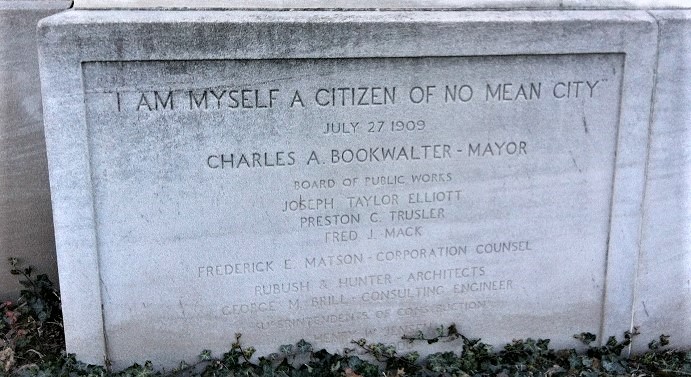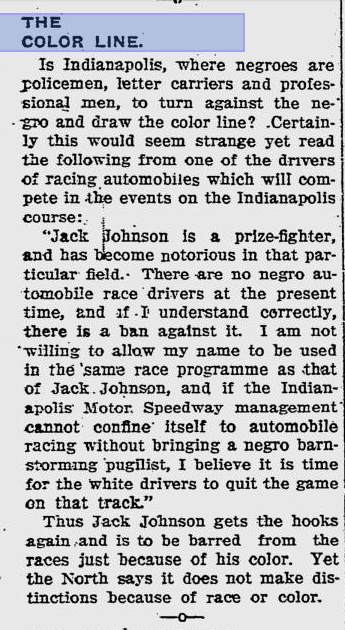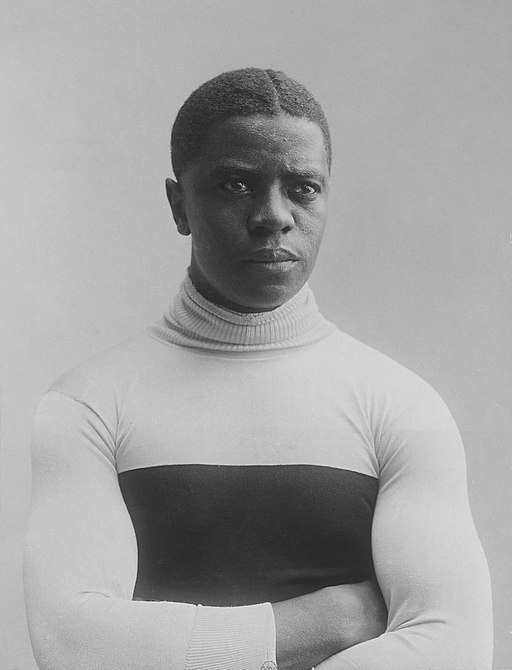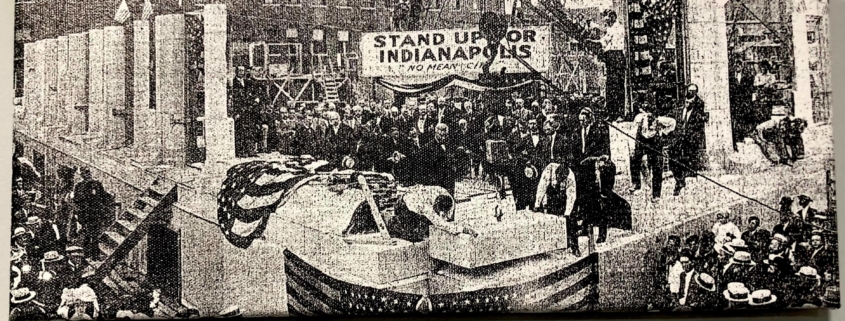“We Are No Mean City.” Reflecting on 1909 in Indianapolis…in 2021
1909 DIGITAL is an academically “Evocative” brand name. It’s slightly mysterious. When done right, an evocative name should cause people to ask, “What does it mean?” Things have gone just as planned for us. The story behind 1909 DIGITAL has inspired us from day one. It has built meaning into our brand and it’s let us share our values more frequently. Often we only have the opportunity to share the surface-level story behind our name. I’m eager to dig deeper into what 1909 DIGITAL has meant to us living and working through the events of 2020 and now as we embark on 2021.

Indianapolis City Hall Cornerstone | Photo courtesy HistoricIndianapolis.com
More than a quote
The main source of inspiration for our business is a quote from former Indianapolis Mayor Charles A. Bookwalter, “I am, myself, a citizen of no mean city.” This quote is inscribed on the cornerstone of Indianapolis City Hall, which was laid in 1909.
“No mean” was used frequently at the time to describe something as impressive, or not insignificant. The line itself originates from Acts 21:39, in which Paul describes his home Tarsus: “I am…a citizen of no mean city; and I implore you, permit me to speak to the people.” Not so bad, comparing Indianapolis to the home of the Apostle Paul, Cleopatra, and Mark Antony, right?
Beyond that, in 1909 “No Mean City” was the theme for Mayor Bookwalter’s political campaign. The front page of the Indy Star on July 28, 1909 showed a photo of the cornerstone ceremony with a banner hanging above the Mayor that reads, “Stand up for Indianapolis. No Mean City.”
Juxtaposing then and now
There’s something about placing opposite ideas side-by-side that’s intriguing. We weren’t the first to bring the idea of Indy being “No mean city” into the present day. The quote saw a resurgence as a community touchstone for LGBTQIA rights in the wake of the 2015 RFRA legislation and resulting “Indy Welcomes All” campaign. It was at that point that Indy being “No mean city” took on a whole new meaning. We are literally not “mean,” and all are welcome here.
Because other local groups have used the phrase for publications and initiatives, we chose its historically significant year for our brand name—1909. But it’s essential that we invoke the idea that contemporary and future ideals are our priority. This is why 1909 DIGITAL came to be. We’re proud of our humble Hoosier roots and also focused on the progress of our time, digitally and otherwise.
Lessons of 2020
The first year of our business coincides with a year no one will soon forget. At its worst, 2020 has numbed us to increasingly dire news and has normalized grief. At its best, the digital distance has humanized us and brought people closer together. Our core value is to be transparent and authentic humans. We’ve built a true “work fam” to keep us sane.
At the same time, we were deeply impacted by the progress and pushback resulting from Black Lives Matter and other BIPOC initiatives. As a business and on a personal level, there is power in understanding what you don’t know, in realizing that reactive response is not enough, and in learning what actions to take to truly make a difference. Most importantly, we’ll never stop learning.
I’m trying to do my part to take a second look from another less privileged perspective. In looking at the July 27, 1909 Indy Star photo of Mayor Bookwalter’s cornerstone-laying ceremony, it’s easy to see the exuberance and hope in the crowd. Look again and you’ll see that the crowd is made up of only white faces. We appreciate the positive connotations of Mayor Bookwalter’s 1909 “no mean city” quote. But what did that look like for the Black population in Indy at the time?

St. Petersburg, Florida Independent | August 6, 1910
What was happening in 1909?
It is through this lens that I began to look specifically at what the year 1909 was like for communities of color in Indianapolis. To truly understand the significance of our company’s namesake, we need a full, rich context. Not just the whitewashed front pages of the early 20th century. Here’s what I found:
- In late 1909 Madam CJ Walker was preparing to move her thriving hair care business to Indianapolis from Pittsburgh. She settled in the Indiana Avenue district in 1910 and by August had 950 sales agents. She later became America’s first female self-made millionaire.
- The 1909 opening of the Indianapolis Speedway didn’t involve the local Black community at all. In fact, in August of 1910 Louis Chevrolet essentially forbade the famed boxer Jack Johnson from running an exhibition race at the Speedway, stating, “If…management cannot confine itself to automobile racing without bringing a negro barn-storming pugilist, I believe it is time for the white drivers to quit the game on that track.” Papers as far off as St. Petersburg, Florida reported on this with surprise because northern cities like Indianapolis had the reputation for being friendly to Blacks.
- The town of Speedway, Indiana was developed only a couple of years later in 1912. While the neighborhoods were optimistically intended to support the industry around the Indianapolis Motor Speedway, they also included racially restrictive covenants banning Blacks from living there.
- On the other hand, Indiana Avenue was the buzzing center of African American daily life and culture in Indianapolis. In the decade prior to “The Avenue’s” Jazz-Era heyday, 1909 was a time of budding businesses. The Indianapolis Recorder, the longest-running African American newspaper in Indiana, made its home in and around Indiana Avenue since 1895. It’s still thriving today.
- Indianapolis’ “Major” Taylor was a successful professional bicyclist at the height of the late 19th century bicycle craze. He was nationally and internationally known, becoming the first African American to win a world cycling championship. Taylor’s last professional race was in France in 1909. He retired in 1910 at the age of 32, pointing to the physical and mental strain of racial discrimination as a reason for stepping back from his career.

Major Taylor 1906-1907 | photographer Jules Beau | Gallica Digital Library | PD
So let’s go back to that phrase that Indianapolis Mayor Bookwalter stated on July 27, 1909: “I am, myself, a citizen of no mean city.” The quote survives from a time before things got a lot worse: before the revival of the KKK, before the term “redlining” existed, before mass incarceration, and many other atrocities. It lives in a time before things started improving: before Martin Luther King, Jr. had a dream, before interracial marriage was legalized, before our first Black president, before Black Lives Matter became a spoken mantra. Indianapolis has seen progress. Indianapolis still has a long way to go. That’s the juxtaposition. The good and the bad. The past and the future. It’s our job to move forward with eyes open.





